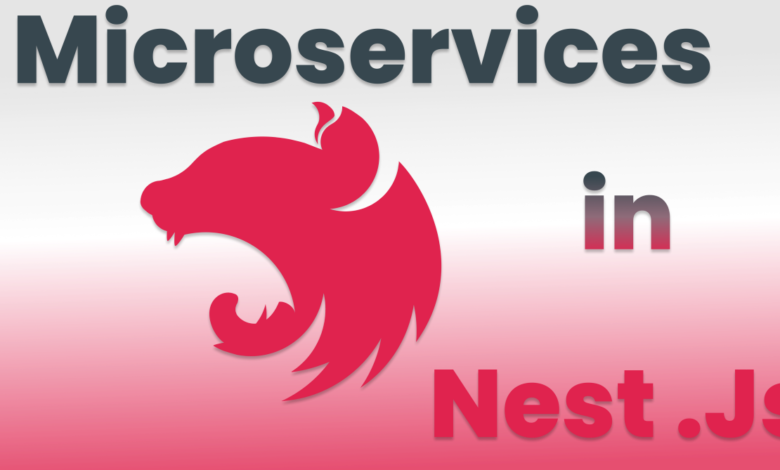From Monolith to Microservices: Migrating Your Node.js App with Nest.js

The limits of a monolithic design sometimes become brutally obvious as your Node.js application grows in size and the need for additional functionality increases. Although a monolithic structure could be easy to set up initially, it might eventually result in sluggish development cycles, difficult maintenance, and the notorious “big ball of mud” codebase.
This blog post will explain why and how to use Nest.js to convert your monolithic Node.js application to microservices.
Why Microservices?
All functions, including database management, frontend rendering, and business logic, are grouped together in monolithic applications into a single, integrated system. Although this is effective for small-scale applications, as your application expands, it may become a bottleneck. Consider adding a new feature; even a little adjustment requires a complete app redeployment. Even worse, troubleshooting may become a nightmare if one component fails since the entire program may stop working.
Your application is divided into smaller, independent services via microservices. Each service uses APIs to connect with the others and is in charge of a certain feature or capability. This architecture allows you to develop, test, and deploy each service independently. It improves fault isolation, scalability, and gives development teams more agility.
Why Should Nest.js Be Used For Microservices?
Nest.js offers a robust toolkit for creating scalable server-side applications and is based on Node.js. Because of its Angular-inspired architecture, developers are immediately presented with a recognizable and well-structured framework. Nest.js is opinionated about how applications should be structured, which is helpful when working with complex microservices setups.
Additionally, Nest.js provides many transport layers for inter-service communication, including TCP, HTTP, and message brokers like Redis or NATS, and it natively supports microservice patterns.
Preparing for Migration
It takes time to make the switch from a monolithic design to microservices. It requires planning and careful execution.
1. Analyze Your Monolith
Begin by analyzing your current Node.js application. Identify the tightly coupled modules that are frequently changed or causing bottlenecks. These are good candidates for microservices.
2. Define Service Boundaries
Establish the parameters for your microservices when you have a solid grasp of your monolith. Each microservice should ideally be in charge of a certain area, such inventory, payment processing, or user administration. Reducing inter-service interdependence is the aim.
3. Start Small
Converting everything to microservices at once is alluring, but it’s not a safe strategy. Begin by dividing up your application into one or two essential parts and turning them into microservices.
Building Microservices with Nest.js
It’s time to create your first microservice after you’ve laid out your migration strategy. Nest.js makes this process easier by offering integrated microservice architecture tools.
Microservice in Nest.js
Creating a microservice in Nest.js is straightforward. Nest.js has a microservice decorator, which you can use to define your microservices.
This creates a microservice that communicates using TCP. However, you can easily switch to other transport layers like Redis or NATS by adjusting the transport configuration.
Communication Between Microservices
Inter-service communication is one of the difficulties in a microservice design. Request-response (via message queues or HTTP) and event-based communication are two of the patterns that Nest.js supports. Using Nest.js’ Proxy class, you can easily set up inter-service communication without writing boilerplate code.
Challenges of Migrating to Microservices
Even while microservices provide many advantages, moving from a monolithic program is not without its difficulties.
- Complexity: Overseeing several services makes operations more complicated. You will have to oversee service-to-service communication, load balancing, and service discovery.
- Data Management: In a monolith, your application likely shares a single database. In microservices, services should have their own database. This requires careful planning around how data is synchronized and shared between services.
- Latency and Fault Tolerance: Network delay is introduced by communication across microservices, and a single service failure might result in a chain reaction of problems. To reduce these hazards, you’ll need to use techniques like circuit breaking and retries.
To navigate these challenges successfully, hire Nest JS developers with experience in microservice architecture.
Conclusion
The scalability, flexibility, and maintainability of your Node.js application may be greatly increased by utilizing Nest.js to migrate it from a monolith to microservices. From establishing communication to managing dependencies, Nest.js streamlines several facets of microservice development, despite the fact that the process may appear overwhelming.
Hiring Nest.js developers who are knowledgeable with both Node.js and microservice architectures is a smart choice when in doubt.




